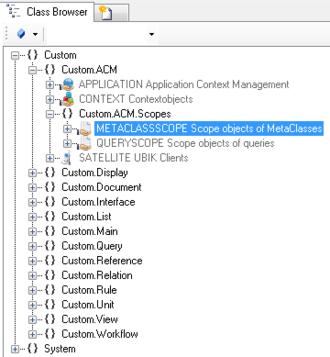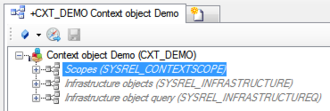Difference between revisions of "HowTo:Create a new MetaClassScope"
| Line 9: | Line 9: | ||
# Save the changes with {{key press|Ctrl|S}} or the save command | # Save the changes with {{key press|Ctrl|S}} or the save command | ||
# The object needs to be added to the list of scopes object of the according [[Application]]: | # The object needs to be added to the list of scopes object of the according [[Application]]: | ||
| − | :*Individual objects can be added directly to the [[CONTEXTSCOPE|Scopes relation]] in the ACM using the [[Relation Editor#Drag & Drop|Relation Editor]].<br/>[[File: | + | :*Individual objects can be added directly to the [[CONTEXTSCOPE|Scopes relation]] in the ACM using the [[Relation Editor#Drag & Drop|Relation Editor]].<br/>[[File:UI_MetaClassScope_03.PNG|330 px|border|alt=MetaClassScope|MetaClassScope]] |
[[Category:How-To]] | [[Category:How-To]] | ||
[[Category:UBIK Studio]] | [[Category:UBIK Studio]] | ||
Revision as of 13:51, 21 November 2013
With a MetaClassScope is defined a MetaClass and their properties are visible on the mobile client.
- Navigate to the MetaClass METACLASSSCOPE in the Class Browser
- Create a new instance using the Bulk Editor
- It is required to assign a target type of the MetaClassScope to the MetaClass attribute either by
- dragging and dropping a MetaClass object onto the cell
- selecting the desired MetaClass from the dialog appearing after double-clicking the cell
- It is recommended to set at least name and description
- Save the changes with Ctrl+S or the save command
- The object needs to be added to the list of scopes object of the according Application:
- Individual objects can be added directly to the Scopes relation in the ACM using the Relation Editor.
- Individual objects can be added directly to the Scopes relation in the ACM using the Relation Editor.



